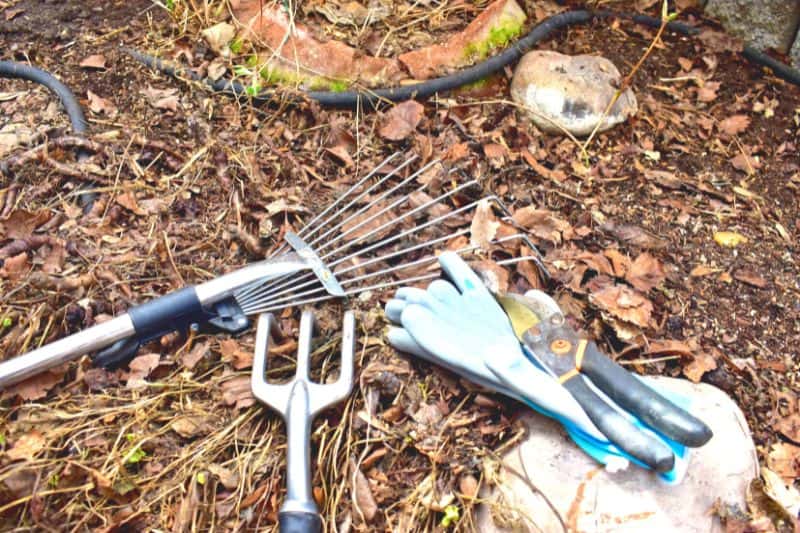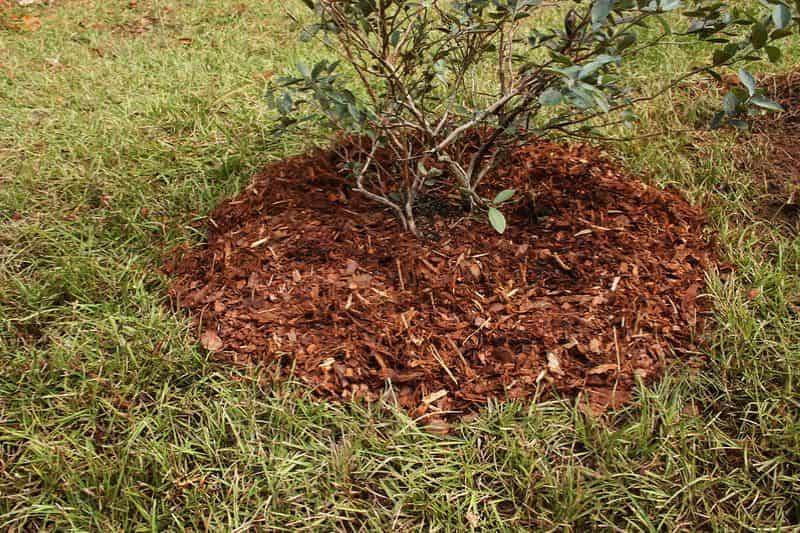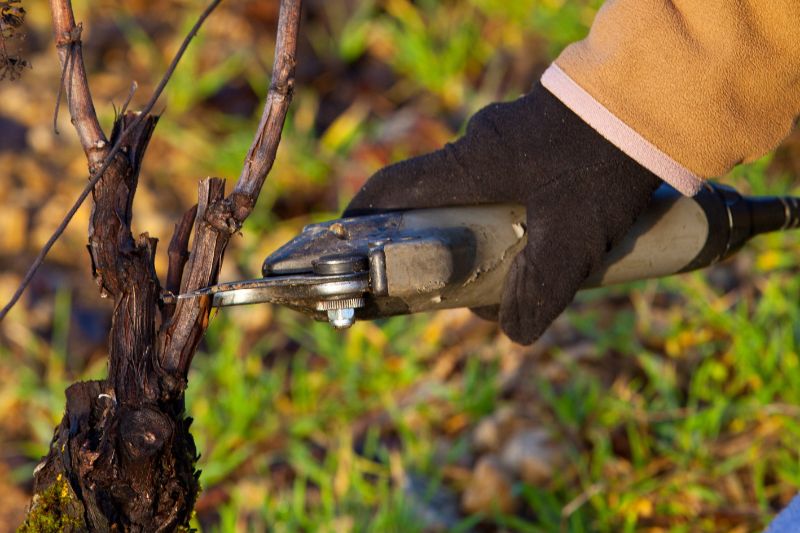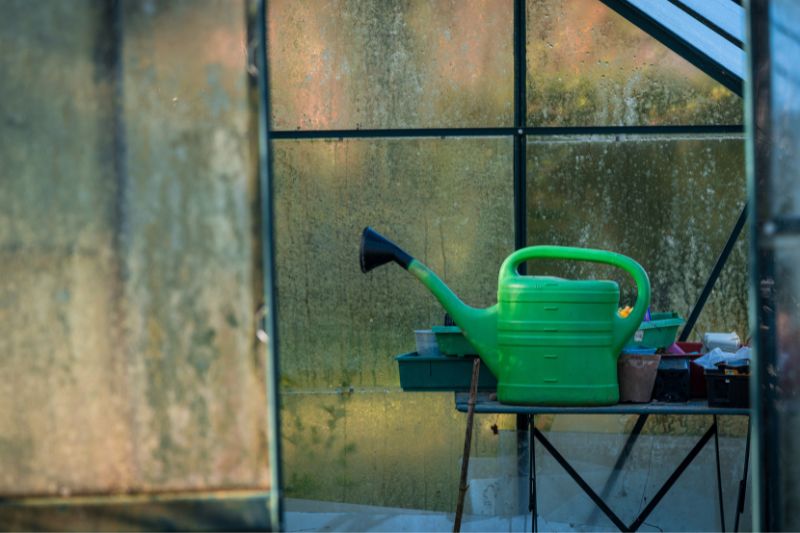Ah, winter! This wonderful season when nature takes a break, and where some gardeners might be tempted to do the same. But beware, don’t let the song of the snowflakes lull you! If you dream of transforming your garden into a desolate spectacle worthy of a post-apocalyptic film, then do absolutely nothing. Otherwise, stay with us.
In this article, we will humorously address (and with a shovel of sarcasm) the classic mistakes you might make in maintaining your garden during winter. It’s a guide for anyone who wants to avoid turning their green oasis into a frozen nightmare. We promise to provide you with practical tips while entertaining you. After all, who said gardening and laughter were incompatible? So, put on your warmest gloves, prepare your best laugh, and let’s dive together into this wonderful world of winter garden maintenance!
Lesson 1: Neglecting to clean gardening tools
Start by royally ignoring your tools after each use. Let the soil dry on the spade, allow rust to settle comfortably on the blades of your pruning shears, and why not, let a few insects make your rake their new home. Moreover, uncleaned cutting tools between prunings can transmit diseases from one plant to another!
Then, store them in a damp, dark place. Better yet: forget them at the back of the garden under a pile of dead leaves. This not only guarantees a nice layer of rust but also the chance of finding your tools in the spring completely warped and perhaps even inhabited by insects.
But, if by misfortune, you wish to regain your senses and take care of your tools, you should clean them after each use, disinfect them, sharpen them regularly, oil them to prevent rust, and store them in a dry place. However, that would be a sure way to ruin your gardening tools. And who would want that, right?

Lesson 2: Ignoring protection for sensitive plants
In the art of failing to maintain your garden in winter, ignoring the protection of sensitive plants is a must. Imagine you are a rebellious gardener, defying the elements, deciding that your sensitive plants can face winter all on their own, like big ones. After all, it’s survival of the fittest, right? Let your plants shiver under the snow, tremble under the frost, and fend for themselves against the icy winds.
But if ever a surge of compassion overwhelms you and you want to save your delicate greens from winter disaster, you might consider covering them with frost protection cloth. And for the more sensitive potted ones, placing them under a shelter, in a greenhouse or a conservatory, or even in an unheated room. Of course, that would be the logical way to ensure they survive until spring, but it would go against your mission as a boldly negligent gardener.

Lesson 3: Forgetting to mulch the soil
In the quest to successfully ruin your garden in winter, forgetting to mulch is a classic. Imagine your bare soil, exposed to the whims of winter, without that cozy protective layer. It’s like going out to the garden in winter without a coat and boots! The roots shiver and the frozen soil hardens. Not to mention the rains that will leach the soil of its nutrients and compact it. This will also be an opportunity to watch your plants struggle for survival and see the weeds take over, as they are not afraid of the cold.
But if, in a moment of clarity, you decide to treat your soil like a king, mulching is your ally. It retains moisture, protects the roots from frost, limits the proliferation of unwanted weeds, and nourishes the soil as it decomposes. Using dead leaves, straw, or wood chips can transform your garden into a winter oasis. However, if your goal is to sabotage your garden, forget about mulching.

Lesson 4: Planting at the wrong time
If you’re looking to perfect the art of ruining your garden in winter, planting at the wrong time is a foolproof strategy. In this case, choose a day when the weather forecasts frost in your area, a storm, torrential rains, or even snow for the coming days. Opt for shrubs or evergreen perennials, spring-flowering bulbs in the heart of winter, just to see them turn into artistic ice sculptures. Or sow seeds that, instead of germinating, decide to take an eternal nap under the frozen soil. It’s a bit like inviting friends for a barbecue in the middle of a blizzard, a memorable event, but for all the wrong reasons.
Of course, if you want to avoid turning your garden into a testing ground for brave plants, there are a few rules to follow. Winter is generally not the best season for planting, especially if the soil is frozen or covered in snow, except in regions with mild winters. If you must plant in winter, choose days when the soil is thawed and workable. Look for plants suited to your climate zone and cold-resistant. And remember, timing is crucial: planting too early or too late can compromise the growth (or even survival) of the plant.

Lesson 5: Failing to prune shrubs and hedges
To master the delicate art of failing to prune your shrubs and hedges in winter, just follow a few simple rules. First, choose the most inopportune moment. For example, a beautiful day of intense frost where every snip of the shears could turn your precious shrubs into ice sculptures. Or, prune just before a big snowstorm to give your plants an intense exfoliating experience.
Imagine yourself as an avant-garde artist, severely pruning your hedges and shrubs into extravagant shapes that defy the laws of nature and gravity. A square here, a triangle there, why not a spiral? Neighbours will surely talk about your unique "talent" for weeks.
However, if you aspire to a garden that is not only alive but also aesthetic, winter pruning requires tact and timing. Avoid pruning when your plants are dormant, especially if they are likely to bloom in early spring. The end of winter, just before the start of active growth, is often a good time. Use well-sharpened, cleaned tools for clean and precise cuts, and prune moderately to avoid stressing the plants.

Lesson 6: Overwatering or underwatering
To stylishly fail at maintaining your garden in winter, play the watering extremist. On one hand, you could become the desert gardener, forgetting that even in winter, your plants are thirsty during long dry spells, especially in southern regions. Let them dry out, dreaming of mirages and life-giving droplets.
On the other hand, transform yourself into a rain god, flooding your garden at every opportunity, especially if your garden is already watered by the clouds. Perhaps the plants, drowned, might start building tiny arks to escape? An excess of water in winter can turn your garden into a marshy area (or an ice rink in case of frost) where only the hardiest creatures (and weeds) will survive.
But, if you want to regain a semblance of common sense, seek balance. Remember that watering in winter depends on many factors: the type of plants (evergreen, deciduous, etc.), the climate, and even the type of soil (clay or draining). Frozen soil cannot absorb water, so it’s better to water when the soil is thawed and your plants can actually benefit from the moisture and in the absence of rain.

Lesson 7: Ignoring winter pests and diseases
To turn your garden into a true winter carnival of pests and diseases, simply ignore them superbly. Imagine the little critters partying on your plants, feasting under your indifferent gaze. Fungi and other diseases join the dance, bringing with them their beautiful palettes of moulds and spots. It’s as if you invited all the garden plagues to a family reunion, where each member tries to outdo the other in terms of damage.
But if, in a surge of awareness, you decide to act like a true guardian of the garden, a few simple measures can be taken. Winter is the perfect time to inspect your plants for signs of pests or diseases. Regular monitoring and cleaning up plant debris can greatly reduce the risk of infestation and infection.
If pests are already present, gentle organic treatments can be used to eliminate them without harming the environment. As for diseases, good ventilation and respecting each plant's specific needs in terms of water and light can prevent their occurrence.

Conclusion
And there you have it, we have reached the end of our guide on how to brilliantly fail at maintaining your garden in winter. We have walked together the path of classic mistakes, from the subtle art of ignoring the cleaning of your tools to the joy of planting at the wrong time. You have learned how to transform your garden into a true post-apocalyptic masterpiece, where every plant struggles for survival in a world of winter neglect.
But, if for some strange reason, you decide to take the path of kindness, remember that a little attention and care can work wonders. Winter is not an excuse to abandon your garden to its sad fate. With a little effort and knowledge, you can prepare it to emerge in spring in full form, ready to burst with colour and life.
So, lace up your boots, put on your gloves, and embrace winter with enthusiasm. Your garden will thank you, and who knows, you might even have fun along the way. After all, gardening, even in winter, remains a joyful and rewarding adventure.
































Comments